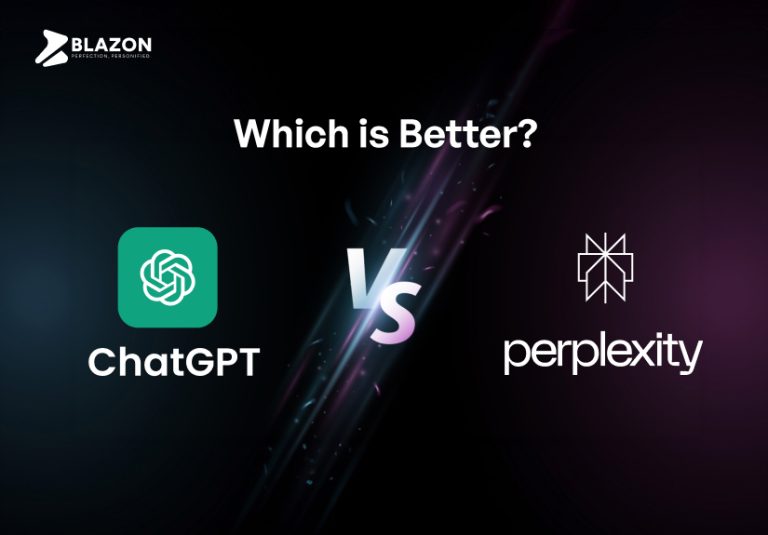Perplexity vs. ChatGPT – Which is Better?

The world of artificial intelligence and natural language processing has seen some incredible advancements lately. Two big players in this field are Perplexity and ChatGPT. But what exactly are they, and which one is better for evaluating language models? In this article, we’ll take a closer look at these concepts and the ongoing debate about which is more effective.
I. What is Perplexity?
Before we dive into the perplexity vs. ChatGPT discussion, let’s get a handle on perplexity. Perplexity is a metric used in natural language processing to measure how sound language models perform, especially in tasks like language modeling and text generation. It’s all about assessing how good a language model is at predicting the next word in a given sequence of words.
Calculating perplexity is a bit mathematical, but in simple terms, it tells us how surprised or uncertain a model would be when trying to predict the next word in a sentence. A lower perplexity score means the model is pretty confident in its predictions, while a higher score suggests it’s a bit unsure.
Mathematically, perplexity (PPL) is calculated using this formula:
PPL = 2^H(X)
H(X) is the entropy of the probability distribution of words in the text. Smaller perplexity values are better because they indicate the model is pretty good at predicting the next word.
II. Meet ChatGPT
Now, let’s introduce ChatGPT! It’s a super cool language model developed by OpenAI, part of the GPT-3.5 family.
What’s so awesome about it? Well, ChatGPT is known for its ability to generate text that sounds just like a human writes it. It’s used in all sorts of applications, from chatbots and virtual assistants to content generation and beyond.
What makes ChatGPT different from the perplexity-based approach is how it’s evaluated. Instead of relying on numbers, ChatGPT gets assessed through interactions with real human users. Human evaluators rate the model’s responses based on criteria like how well it makes sense, relevance, how informative it is, and overall quality. This way, it’s all about evaluating how ChatGPT performs in the real world when dealing with people.
III. The Perks of Perplexity
Perplexity has been a trusty metric in natural language processing for quite some time. It’s super helpful in evaluating language models in different applications like machine translation and speech recognition.
Here are some cool things about using perplexity as a metric:
Easy Comparison
Perplexity gives you a nice number that makes it easy to compare different language models. This is awesome for benchmarking and research.
It’s Simple
Calculating perplexity isn’t rocket science, so it’s accessible to a wide range of researchers and practitioners.
Objective Evaluation
Perplexity gives you an objective way to measure how a model performs, which reduces any subjectivity in the assessment.
Perfect for Language Models
If you’re dealing with tasks that involve predicting the next word or creating coherent sentences, perplexity is still a handy metric to have around.
IV. ChatGPT’s Real-World Performance
Despite the perks of perplexity, some folks argue that it needs to improve when evaluating models like ChatGPT.
Here’s why:
Not So Realistic
Perplexity doesn’t really measure how well a model understands and generates text in real-life situations. It’s more focused on predicting individual words, which only sometimes reflects the overall quality of responses.
Context Matters
Perplexity needs to take into account the context of a conversation. In the world of conversational AI, understanding and keeping up with the context is super important for giving relevant and coherent responses.
Human Touch
ChatGPT shines when it interacts with humans, but perplexity needs to capture the dynamic and nuanced nature of honest conversations.
Subjectivity
Perplexity is purely mathematical, whereas ChatGPT evaluations involve humans and their subjective judgments. These evaluations may give you a better idea of user satisfaction and real-world performance.
V. The Great Debate – Perplexity vs. ChatGPT
So, what’s the deal with the perplexity vs. ChatGPT debate?
Well, it really comes down to your specific goals and use cases. Let’s look at both sides arguments:
Arguments in Favor of Perplexity
Benchmarking
Perplexity is super helpful in comparing different language models and keeping track of progress in the field of natural language processing.
Controlled Experiments
Researchers can use perplexity to conduct controlled experiments, allowing them to focus on specific language understanding and generation capabilities.
Training and Tuning
Perplexity can be a valuable part of training and fine-tuning language models, which helps improve their language skills.
Arguments in Favor of ChatGPT
Real-World Performance
ChatGPT gets evaluated based on real interactions with users, making it more relevant for practical applications like chatbots and virtual assistants.
Context and Subjectivity
Conversations are all about context and subjectivity, and ChatGPT evaluations capture that better.
User-Centric Assessment
Ultimately, the success of language models like ChatGPT depends on user satisfaction and usefulness, making human evaluations more meaningful.
Adaptability
ChatGPT can be fine-tuned for specific purposes and industries, making it flexible for a wide range of use cases.
VI. Finding Common Ground
Instead of choosing one side over the other, there’s a lot of potential in finding common ground and using both approaches for a more comprehensive evaluation of language models.
Here’s how we can do that:
Hybrid Metrics
We can create hybrid metrics that blend perplexity with user-based evaluations. This way, we get the best of both worlds – the quantitative benefits of perplexity and the real-world relevance of ChatGPT-based assessments.
Task-Specific Evaluation
Different tasks might require different evaluation methods. So, for language modeling tasks, we can stick with perplexity, while conversational AI tasks lean more toward user interaction evaluations.
Fine-Tuning
We can also consider incorporating perplexity as an additional aspect during the fine-tuning process for language models. This might help improve their language modeling skills.
User Feedback Matters
Continuously collecting user feedback is key to refining language models and gaining insights that perplexity metrics might miss.
Conclusion
The perplexity vs. ChatGPT debate highlights the evolving nature of language model evaluation. While perplexity remains a valuable tool for measuring language understanding and generation, models like ChatGPT emphasize the importance of real-world performance and user-centric evaluations.
Ultimately, the choice between perplexity and ChatGPT-based evaluation depends on your specific application and goals. Researchers and practitioners should consider the strengths and limitations of each approach and, in many cases, aim for a balanced combination to get a more complete picture of language model performance. As the field of natural language processing continues to evolve, so will the methods used to evaluate and enhance these powerful AI systems.
© 2023 Blazon All Rights Reserved.









 +91 97866 99000
+91 97866 99000 (720) 500-3435
(720) 500-3435 +4915168619030
+4915168619030





Leave a Reply
You must be logged in to post a comment.